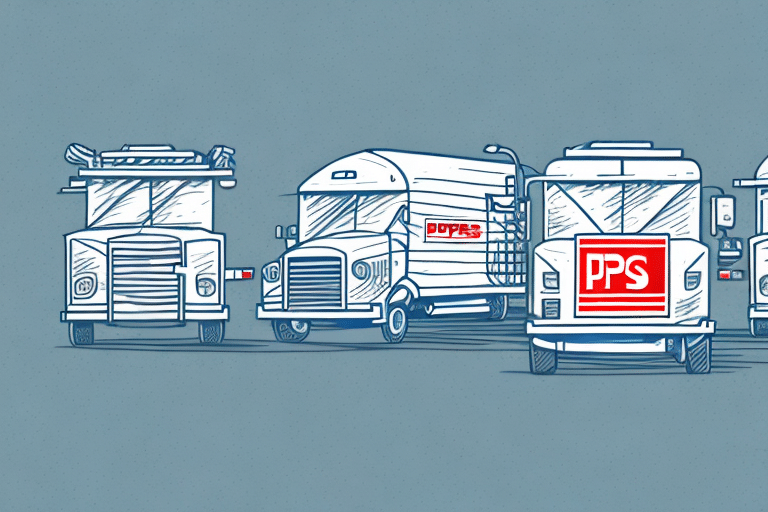Introduction to USPS and UPS
When it comes to shipping packages domestically or internationally, two of the most prominent carriers are the United States Postal Service (USPS) and United Parcel Service (UPS). Both offer a variety of services and competitive pricing, which can make choosing between them challenging. This article provides a comprehensive comparison of USPS and UPS, focusing on their rates, delivery times, additional services, and customer experiences to help you make an informed decision.
Understanding Shipping Cost Factors
Several factors influence the final cost of shipping a package with USPS or UPS. These include:
- Package Size and Weight: Larger and heavier packages generally cost more to ship.
- Destination: Shipping internationally typically incurs higher costs than domestic shipping.
- Delivery Speed: Faster shipping options come at a premium.
- Additional Services: Features like insurance, tracking, and signature confirmation can add to the cost.
- Special Handling: Items that are fragile or hazardous may require special packaging and handling, increasing the overall cost.
- Seasonal Demand: During peak seasons like holidays, shipping costs may rise due to increased demand.
Understanding these factors can help you choose the most cost-effective shipping method for your needs.
Comparing Shipping Rates by Package Size and Weight
When comparing USPS and UPS rates, it's essential to consider the size and weight of your packages. Here's a general overview:
- Small Packages (Under 1 lb): USPS is often the more affordable option for lightweight packages. Services like USPS First-Class Mail provide economical rates for small shipments.
- Medium to Large Packages (Over 1 lb): UPS tends to offer competitive rates for heavier packages, especially for shipments over 5 lbs.
For example, according to the latest rate charts:
| Service | USPS | UPS |
|---|---|---|
| 1 lb Package (Domestic) | Starting at $7.95 (First-Class Mail) | Starting at $8.50 (UPS Ground) |
| 10 lb Package (Domestic) | Starting at $18.90 (Priority Mail) | Starting at $12.00 (UPS Ground) |
For detailed and up-to-date rates, refer to the official USPS Pricing Page and UPS Shipping Rates.
Domestic vs. International Shipping Costs
The cost dynamics between USPS and UPS differ significantly when it comes to domestic versus international shipments:
- Domestic Shipments: USPS often provides more cost-effective options for domestic shipping, especially for smaller and lighter packages. Services like USPS Priority Mail offer flat-rate boxes that can be economical for heavier items.
- International Shipments: UPS typically offers more competitive pricing for international shipping, particularly for larger and heavier packages. Their comprehensive international network ensures reliable delivery across more than 220 countries and territories.
Additionally, USPS offers flat-rate international shipping options, which can be advantageous for shipping heavier items at a predictable cost.
For more information on international shipping rates, visit USPS International Shipping and UPS International Shipping pages.
Delivery Timeframes Comparison
Delivery speed is a crucial factor when choosing between USPS and UPS. Here's how they generally compare:
- USPS:
- Priority Mail Express: Overnight delivery to most locations.
- Priority Mail: 1-3 business days for delivery.
- First-Class Mail: 1-3 business days for smaller packages.
- UPS:
- UPS Next Day Air: Guaranteed next-day delivery.
- UPS 2nd Day Air: Delivery within two business days.
- UPS Ground: Typically 1-5 business days, depending on distance.
While USPS offers competitive delivery times for certain services, UPS generally provides more options for expedited shipping, which can be critical for time-sensitive deliveries.
Additional Services: Tracking, Insurance, and More
Both USPS and UPS offer a range of additional services to enhance the shipping experience:
- Tracking:
- USPS: Provides basic tracking with most services. Enhanced tracking available with Priority Mail Express.
- UPS: Offers detailed real-time tracking and notifications across all services.
- Insurance:
- USPS: Includes $50 of insurance with Priority Mail; additional insurance available for purchase.
- UPS: Includes $100 of insurance with most services; additional coverage available.
- Delivery Confirmation:
- USPS: Signature confirmation available for an extra fee.
- UPS: Signature required options and adult signature required available.
For more details on additional services, visit USPS USPS Services and UPS UPS Services.
Customer Service Experiences
Customer service quality can significantly impact your shipping experience. Here's a comparison based on recent reviews:
- USPS:
- Pros: Extensive network of post offices, reliable for everyday mailing needs.
- Cons: Longer wait times for customer support, occasional delays during peak seasons.
- UPS:
- Pros: Robust customer service with dedicated support lines, efficient handling of claims.
- Cons: Higher cost for premium services, occasional issues with package handling.
Both carriers have areas of strength and weakness in their customer service. It's advisable to consider feedback specific to your region and shipping needs.
Pros and Cons of USPS vs. UPS
USPS
- Pros:
- Generally more affordable for small and lightweight packages.
- Extensive network with access to every U.S. address.
- Flat-rate options available for both domestic and international shipping.
- Cons:
- Slower delivery times for certain services.
- Limited tracking capabilities compared to UPS.
- Potential for delays during high-demand periods.
UPS
- Pros:
- Faster and more reliable delivery options, especially for expedited shipping.
- Detailed tracking and advanced notification systems.
- Better handling of larger and heavier packages.
- Cons:
- Typically more expensive, especially for smaller packages.
- Additional fees for certain services like residential delivery.
- International shipping can be complex with varying rates.
Tips for Choosing Between USPS and UPS
- Assess Your Shipping Needs: Determine the size, weight, and destination of your package to choose the most cost-effective option.
- Consider Delivery Speed: If you need expedited delivery, UPS may offer faster options.
- Evaluate Additional Services: Decide if you need enhanced tracking, insurance, or signature confirmation.
- Compare Costs: Use the official USPS and UPS rate calculators to get accurate pricing based on your specific shipment details.
- Check Reliability and Customer Reviews: Look into recent customer feedback to gauge the reliability of each carrier in your area.
Conclusion: Which Is Cheaper - USPS or UPS?
Determining which carrier is cheaper between USPS and UPS depends largely on the specifics of your shipment. For small, lightweight, and domestic packages, USPS is often the more economical choice. However, for larger packages, international shipments, or when expedited delivery is required, UPS may provide better value despite higher costs. It's essential to evaluate your unique shipping requirements and utilize the tools and resources provided by both USPS and UPS to make the most informed and cost-effective decision.






















